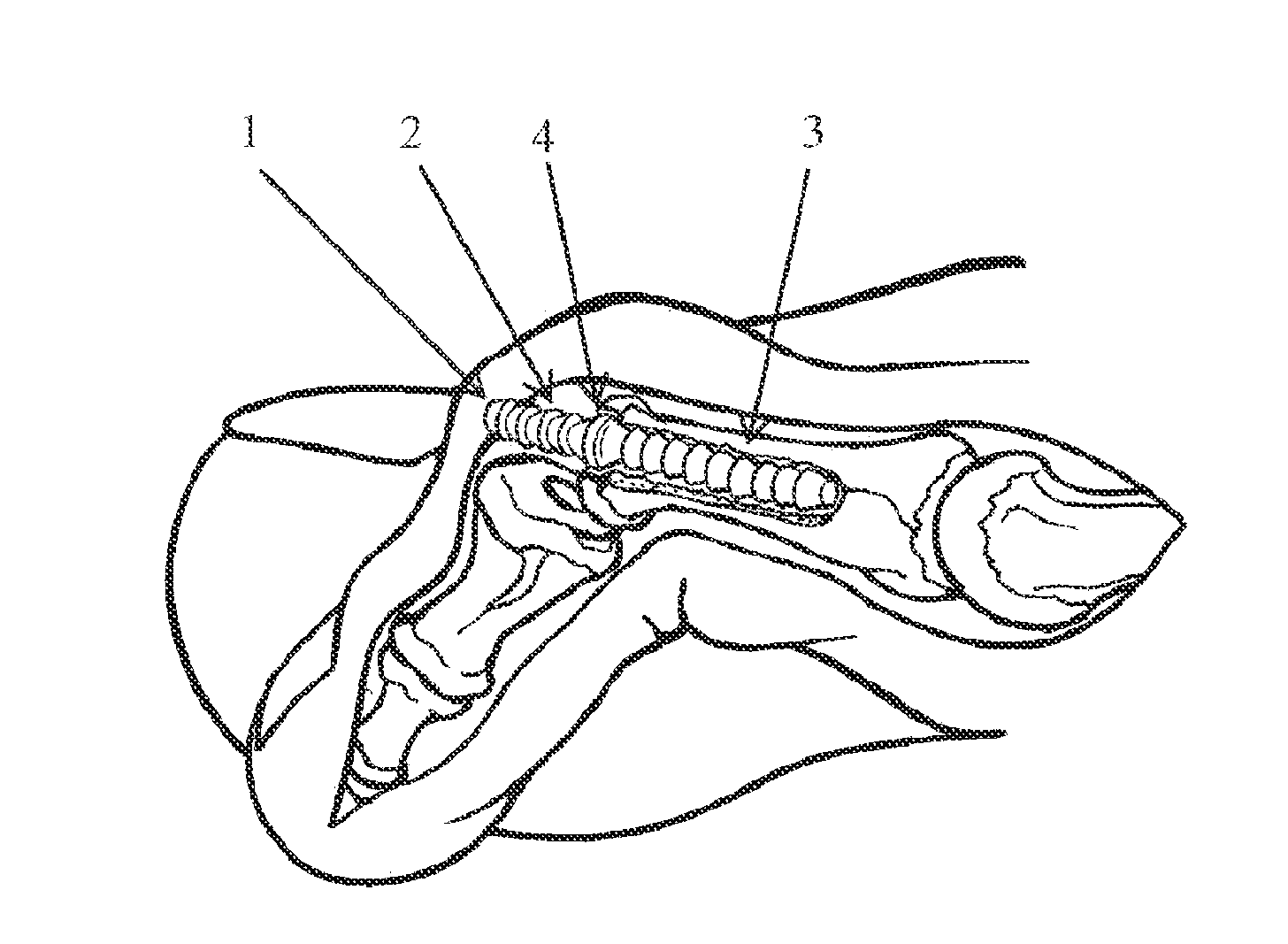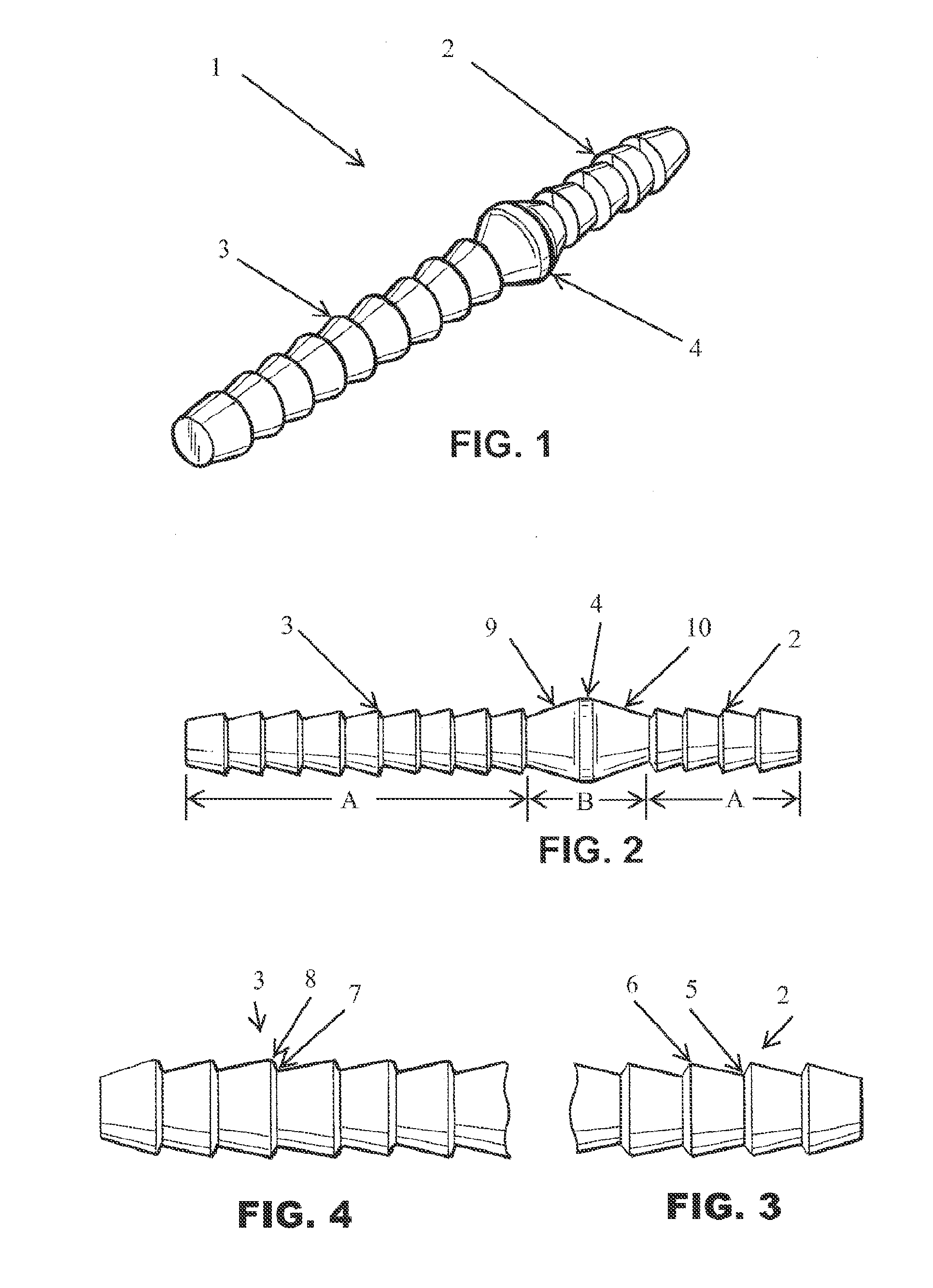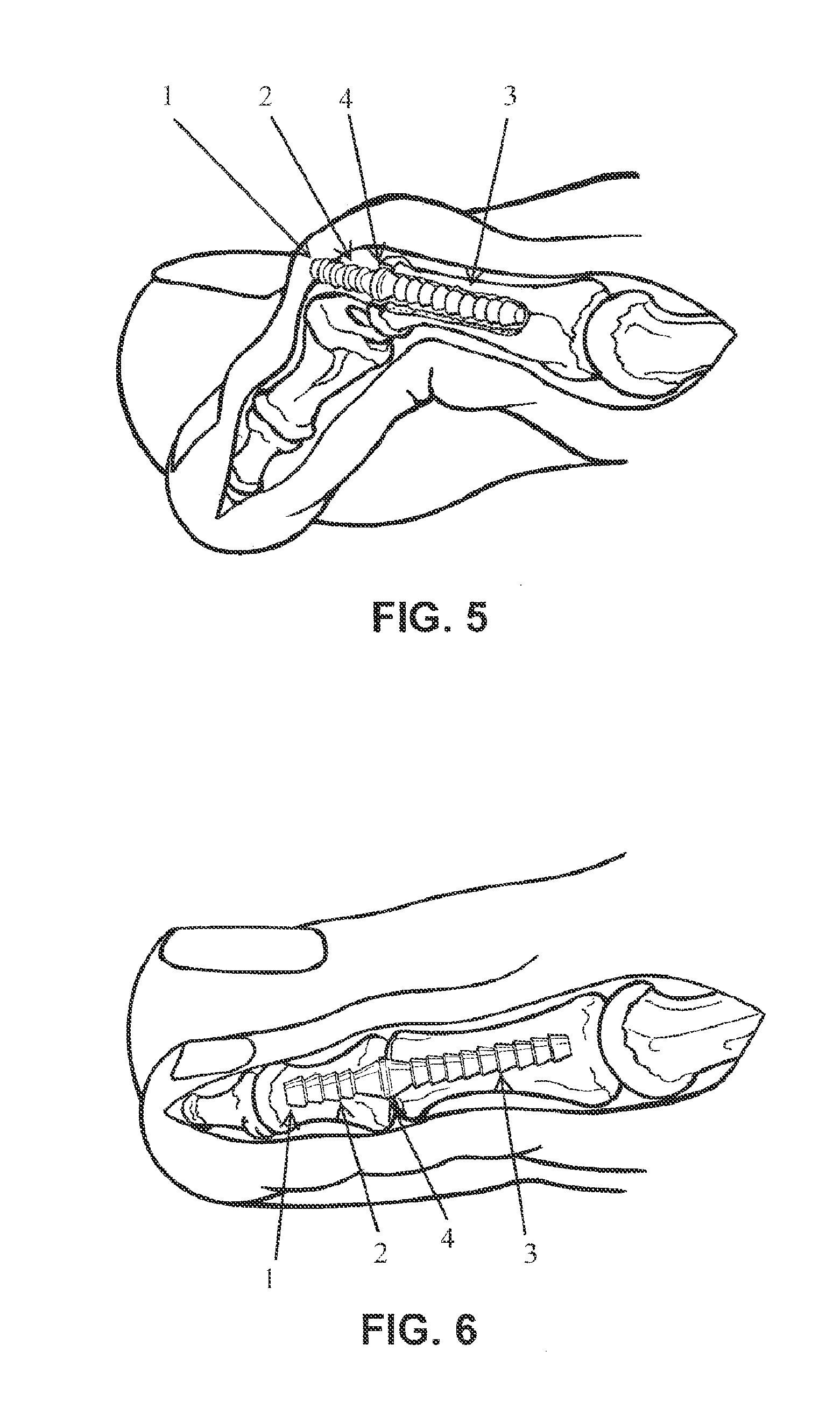Cortical Bone Pin
a cortical bone and pin technology, applied in the field of cortical bone pins, can solve the problems of high abnormal arrangement of the bone of the toe, affecting the healing effect of the toe, so as to reduce the brittleness
- Summary
- Abstract
- Description
- Claims
- Application Information
AI Technical Summary
Benefits of technology
Problems solved by technology
Method used
Image
Examples
Embodiment Construction
[0028]Reference will now be made in detail to the preferred embodiments of the present invention, examples of which are illustrated in the accompanying drawings.
[0029]FIGS. 1-4 show a pin 1 according to a first exemplary embodiment of the present invention. As shown in FIG. 1, the pin 1 has a substantially cylindrical shape.
[0030]As shown in FIGS. 1-2, in one embodiment, barbs 2 are provided on the distal end of the pin. Barbs are preferred over threads as the torque required to install a threaded pin may stress the pin to failure. As shown in FIG. 3, the profile of the barbs 2 may be such that, as a barb 2 proceeds from a distal end to a proximal end, the barb 2 slopes gradually from a trough 5 to a crest 6, with an abrupt slope from a crest 6 to a trough 5. This way, the barbs 2 are designed to resist migration of the pin 1 toward a proximal direction after the pin has been inserted into the bone of a toe of a patient. Similarly, the barbs 2 are designed to resist migration of a d...
PUM
 Login to View More
Login to View More Abstract
Description
Claims
Application Information
 Login to View More
Login to View More - R&D
- Intellectual Property
- Life Sciences
- Materials
- Tech Scout
- Unparalleled Data Quality
- Higher Quality Content
- 60% Fewer Hallucinations
Browse by: Latest US Patents, China's latest patents, Technical Efficacy Thesaurus, Application Domain, Technology Topic, Popular Technical Reports.
© 2025 PatSnap. All rights reserved.Legal|Privacy policy|Modern Slavery Act Transparency Statement|Sitemap|About US| Contact US: help@patsnap.com



